Yankee vs Montreal Axes: What’s the Difference?
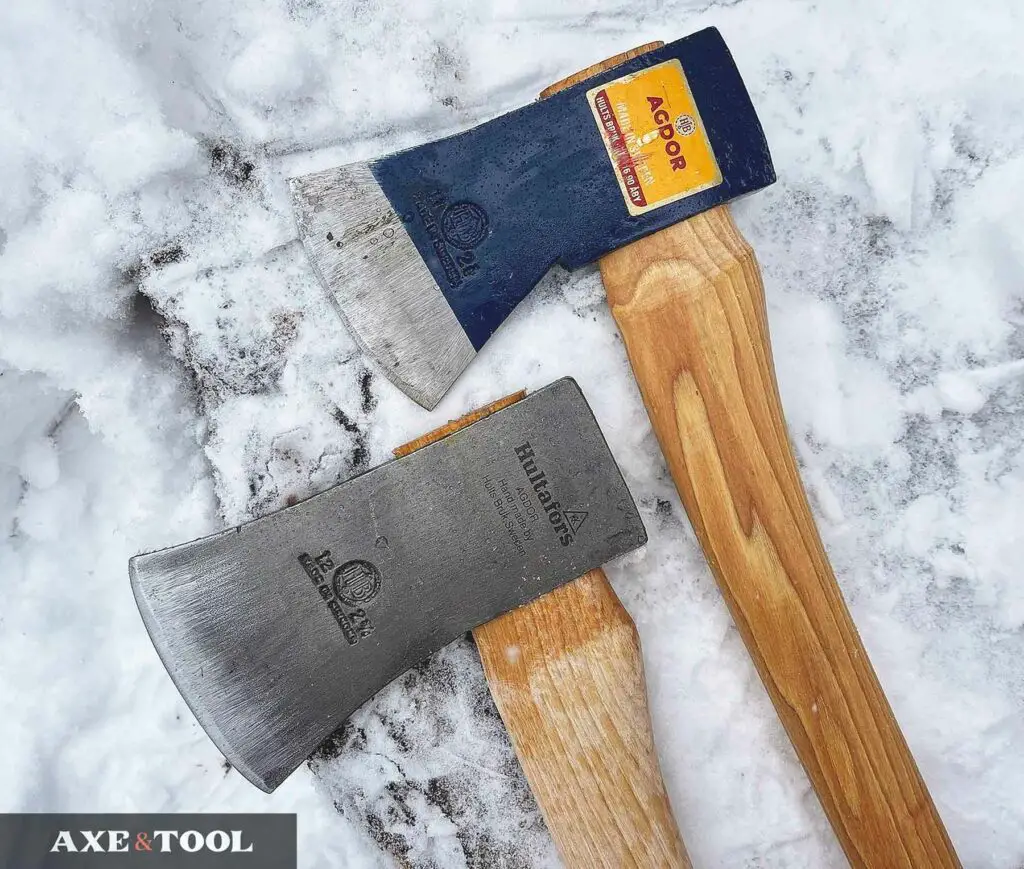
Overall, both these axes are very similar and can be used in very similar ways. These are some of my favorite work axes, and they both have the same level of quality in terms of handle and finishing. But if you really want to look at the nuances – I have them laid out below.
The Yankee and Montreal axes can both cut down trees, remove branches, and do some light splitting. However, the Yankee axe is a bit longer with a more general-purpose blade shape, while the Montreal axe has a wider and more curved blade that is slightly optimized for chopping and limbing.
Both these axe designs have been around for over 100 years, and there have been subtle changes over time – but I am focusing on the current iterations produced by Agdor / Hultafors / Hults Bruk.
Note: Agdor, Hults Bruk, and Hultafors are all the same company, so depending on your region you may find axes branded differently (but they are the same).
This is just a hobby, but if you buy through a link I may get a commission that supports the site. Thanks!
The Yankee Pattern
The Yankee is a classic American pattern that has been around since the late 1800s and has been one of the most widely produced patterns ever since. It’s a fairly rectangular design with a long blade length and a mid-size cutting edge. The bit has a small even curve, and lightly flares in the toe (top) and only a little bit more in the heel (bottom).
It’s a very effective chopper, the profile is a thin wedge that concentrates the force into the narrow blade. This makes it great for chopping deeper into the denser wood in the middle of the largest hardwood trees.
While it’s definitely not a splitting axe it’s capable of light splitting. The thin wedge can be a little sticky but not too difficult to remove.

The Montreal Pattern
Being Canadian – I have a soft spot for the Montreal pattern.
The Montreal pattern is a classic Canadian pattern that goes to at least the early 1900s. It has a slightly shorter eye than most axes of a similar size and has a very distinct notch under the blade. These two factors allow for a wider blade without adding overall weight. The longer cutting edge has a more dramatic curve that pulls back more at the bottom of the head.
The more dramatic curved bit can roll a little more on impact creating wider cuts. The wider blade is very efficient for felling and chopping small to mid-size trees and makes it easier to clear branches. But it can be a little less efficient chopping through the middle of the largest (24″+) hardwood trees as it won’t sink as deeply into the dense wood.
The Montreal pattern is fine for light splitting, and the blade width/profile is basically the same as the Yankee pattern. But the wider curved bit is “stickier”, and the corners (heel and toe) of the blade are likely to get pinched in larger pieces of wood.
The Montreal 28 has also become a surprise hit with axe throwers.
Size Differences
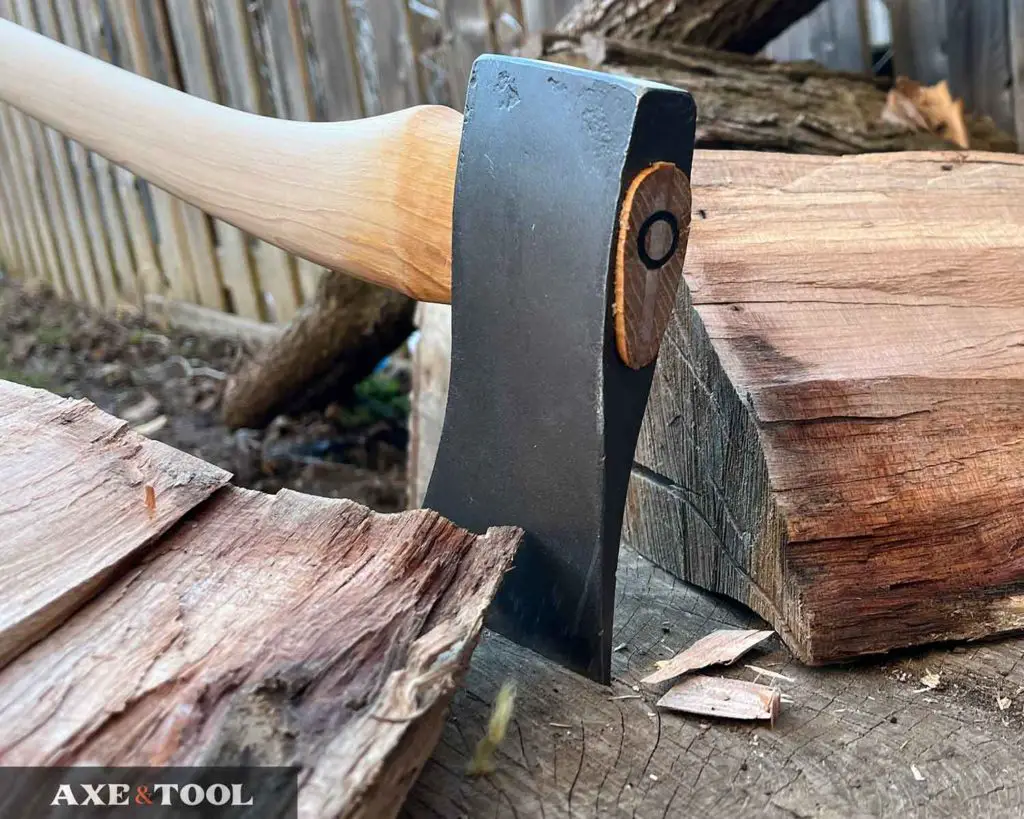
There are more options for Yankee heads compared to Montreal, and you can see below how the differences in the cutting edges compared to the weights.
| Head | Cutting Edge | |
|---|---|---|
| Yankee 26 | 2lbs | 3.6″ |
| Montreal 28 | 2.5lbs | 4.25″ |
| Yankee 28 | 2.75lbs | 4″ |
| Yankee 32 | 3.5lbs | 4.25″ |
| Montreal 32 | 3.5lbs | 5″ |
Canada, the UK, and Europe actually have way more options for Hultafors/Agdor axes than what is available in the US. You can find Yankee heads in basically every 0.25lbs interval between 1.5-4lbs, plus extra large 4.5lbs and 5lb versions. There is actually a large 5lb Montreal as well (although it’s not common).
I don’t have all the blade specs for all those models (because I’m not rich), but you can start to see the differences with the core selection above.
Tuning for Maximum Efficiency
Whether they are branded Agdor or Hultagors, both the Yankee and Montreal pattern axes are “standard” quality, so they will both perform better with a bit of tuning (but they can also be used right away).
And I don’t want to put you off these axes – like I said they are some of my favorites, and I think they are a high-value tool. But it’s important to know what you are getting.
The blades are roughly sharpened
These axes come with a quick ground edge, that is sharp but uneven and quickly done. The clear transition from the primary bevel to the rest of the blade so you should refile the profile if you want to your axe to be as efficient as possible.
The handles are thick
The nice thing about these axes is the hickory is good quality and comes oiled and not varnished. However these standard handles are very thick, and a little thinning down will make them much more comfortable in hand.
I also recently tried shaping the palm swell as part of the thinning process to better catch my hand in use.
I have an article on how to thin an axe handle if you are interested (it’s not hard).
Please comment below If I missed something or if you have any questions. I do my best to respond to everyone.
About the author:
About the author:
Jim Bell | Site Creator
I’m just a guy who likes axes. I got tired of only finding crap websites, so I set out to build a better one myself.
I’m also on Instagram: @axeandtool

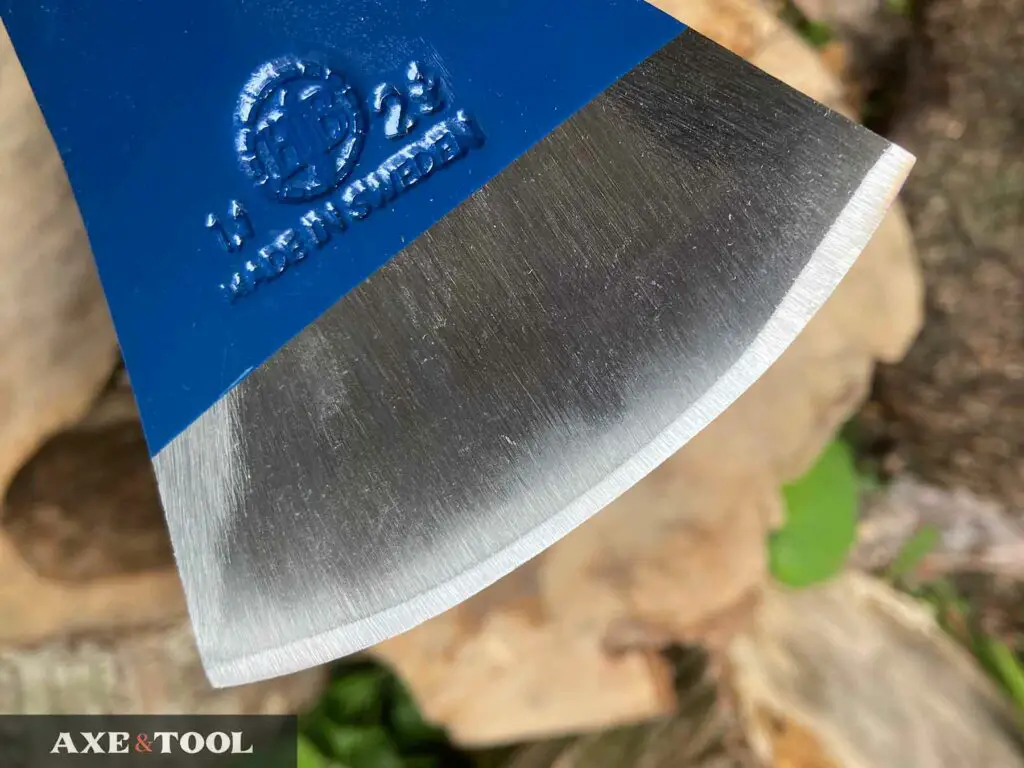
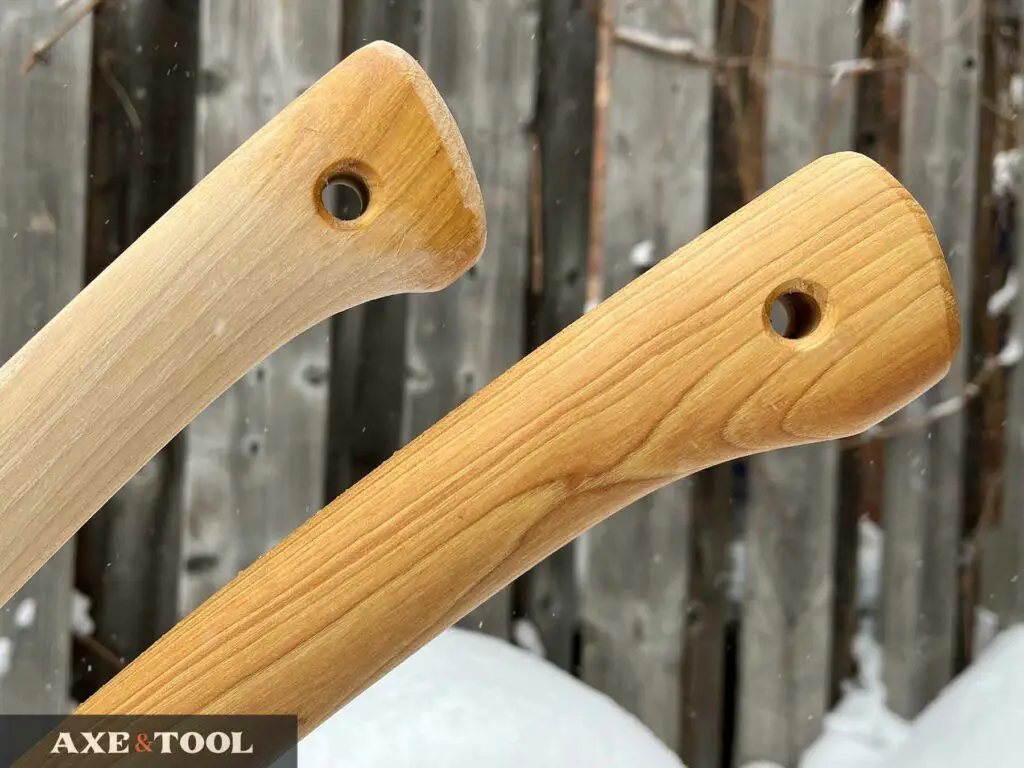
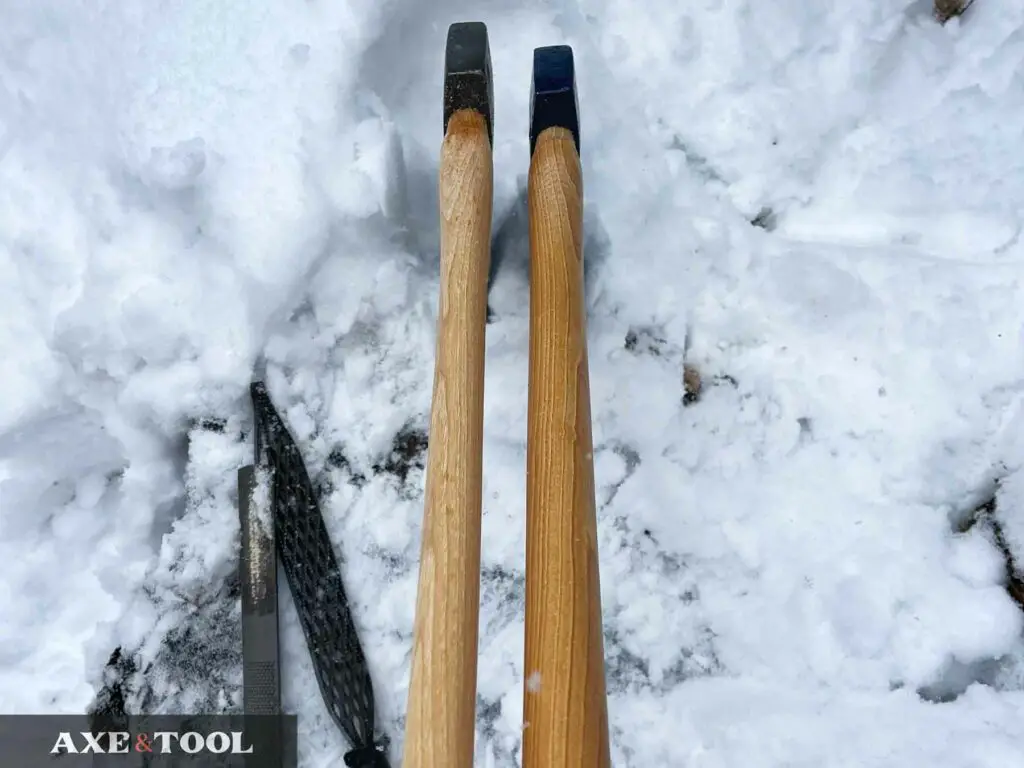


Thanks for the article. Currently trying to decide between these two axes for general camping duties. For me this usually means felling/ bucking small dead spruce and poplar. On road trips it can mean splitting up bigger rounds in campgrounds as well. Sounds like its hard to go wrong with either.
Hi Jim, thank you for this article.
I’m trying to learn more about the history of the Montreal pattern and why the only available maker (that I know of) is based in Sweden.
Do you know where I can find more info about the history of this beautiful axe pattern that is named after my home city?
Thanks!
Hey Antoine, thanks for checking out the site! I plan on getting to pattern histories at some point, but I can give you a little primer (from memory, so may not be 100% perfect lol).
The Montreal pattern did originate in Canada sometime in the mid-late 1800s. Large manufactures would develop patterns based on what was popular in a region. Here is an example from 1901 (link). You can see the pattern is a little different than it is today, which is normal – most patterns evolved over time.
The reason it’s made by a Swedish company (Agdor/Hults Bruk) today, is because they started importing axes to Canada in the 40s or 50s (if not sooner), and were basically the last one standing when all our Canadian axe makers went out of business by the 1970s. So while it may seem odd for a Swedish company to sell “Montreal” axes – they have been making that pattern for at least 80 years.
Hope this helps!